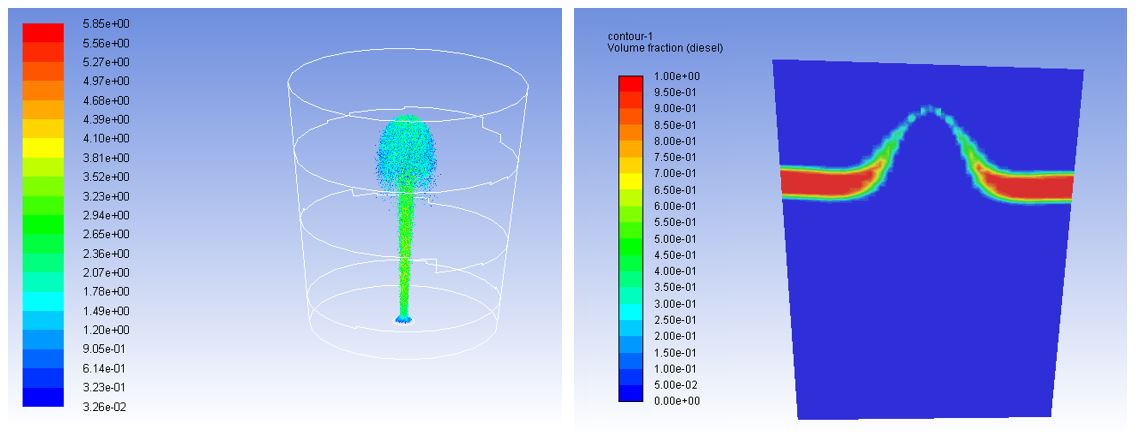
In the SI measurement system of internationally recognized units, absolute viscosity is the “Pascal-second” (Pa-s), with fundamental units of (1 kilogram/meter2)-second.ġ centipoise = (1 gram/centimeter2)-second = 0.01 Pascal-secondįor certain purposes (such as for coatings or lubricants) there is an additional type of viscosity defined-“kinematic viscosity.” Kinematic viscosity is measured by the time required for a given volume of liquid to flow through a capillary or restriction. The centipoise is most commonly used because water has a viscosity of 1.0020 cP (at 20 ☌) and, as with other physical measurements, the base fluid to which all others are compared is water. It is more commonly expressed in ASTM standards as "centipoise" (abbreviated cP) and represents 1/100 of a poise. In the CGS measurement system, this proportionality constant of absolute viscosity is given the name “poise” (P) named after Jean Louis Marie Poiseuille (pronounced Pwa-selli). Note that it is completely independent of the density of the fluid. We have just defined absolute viscosity (also called dynamic viscosity)-the shear force required to produce a given shear rate. Μ = (lbs/in2)/(in/second)/in = (lb-second)/in2 or (lbs/in2)-secondĭynamic or Absolute Viscosity (Greek symbol: ì): Y = plate separation, or any normal position between the plates = inches V = velocity of relative plate movement = inches/second S = force required per unit area, defined as shear stress = lbs/inch2 Let’s look at the physical units of the proportionality constant This constant is identified by the Greek letter µ. Now all we need to complete the equation is a proportionality constant that is characteristic of any given specific fluid. In fact, it has been found experimentally that this shear stress is directly proportional to the variation of fluid velocity or “velocity profile.” Thus, s is proportional to dV/dy For high viscosity fluids, again the velocity at the fixed plate is zero but as we progress away from the plate the fluid velocity is very slow to change. It is zero at the fixed plate and V at the moving plate with almost an instant change across y. So for an extremely low viscosity fluid, the variation in fluid velocity is very large.

pounds per square inch, etc.)Īs one would intuitively expect, the more viscous the fluid, the greater the force required to maintain a given velocity. This gives us what engineers like to call “shear stress.” This unitized force, or shear stress (s) can be expressed as follows:į/A = s ( which is in units of pressure or stress, e.g. In the fluid field in between, the fluid velocity varies from zero up to V and at any given point the incremental velocity change is defined as “dV.”Īdditionally, a force F (called the shear force) is required to move the plate to overcome this viscous “drag.” We define the ratio between the shear force and the shear rate as viscosity.Īlso, a large plate would have much greater viscous drag than a small plate so we limit this surface area by defining this shear force for a given unit of area (A) of the moving plate. At the surface of the moving plate, the fluid velocity is that of the moving plate. At the surface of the fixed plate, the fluid velocity is zero. Thus, as one plate is moved at a given velocity V (called the shear rate) relative to the other plate, a distribution of fluid velocities is created. It is the nature of a viscous fluid to attach itself to the surfaces of these plates. As with most derived measurements in the science of engineering, a model is required.Ĭonsider two plates moving parallel to each other separated a given distance (y) by a viscous fluid. Viscosity is actually a measurement of internal friction, or resistance, to flow by external forces. All other fluids are then measured, calibrated, and thus compared to the viscosity of water.

Water at approximately 70☏ (21☌) has an absolute viscosity of about one centipoise. Molasses and motor oil are thick or high viscosity liquids while gasoline and water are thin, low viscosity liquids.

Thick liquids are said to have a high viscosity and thin liquids a low viscosity. Viscosity can also be thought of as a measure of the "thickness" of the liquid. Thinner liquids, such as water, have lower viscosities, while thicker liquids like oil have higher viscosities. Viscosity is the measure of a fluid's resistance to flow. Viscosity measurements are used in everything from lubrication and heat transfer fluids, to adhesives and coatings to aerodynamic and hydrodynamic drag. One of the more obscure and confusing parameters is viscosity. These behaviors are defined by a collection of measurements. There is a branch of science called Rheology that deals with the deformation and flow of materials.


 0 kommentar(er)
0 kommentar(er)
